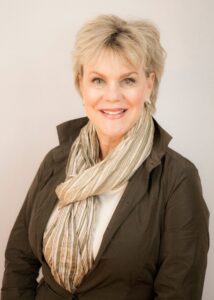
25 Jun 2021
Aging in Place is an Option for LGBT Seniors
As we see a continued growth in the population of older Americans, LGBTQ people make up a significant, and increasingly visible group. For many, the ability to stay home and age in place is a hoped-for idea, and with some planning and help, it is increasingly available as an option. Here are some considerations:
Assessing and Improving Your Home
For many LGBTQ people, home is a place where you can feel safe and protected. In order to age in place, this emotional comfort and safety needs to be paired with a physically safe environment.
According to AssistedLiving.org, as a person ages, they need to take a careful look at their home and consider some key modifications that anticipate the needs that may come up.
They recommend preparing for mobility issues, in places like the bathroom, by purchasing assistive seating, installing bars and altering the bathtub or shower. Ramps, floor modifications and widening doorways can make a home workable for someone in a wheelchair or using a walker.
Technology such as medical alert systems and smart home devices will also help make a home safer, and some of these are covered by Medicaid. There also may be tax credits and other assistance available. Contact your local Area Agency on Aging or county office of aging to see if these tax credits are available.
Understanding ADLs
There is a whole language around aging that includes acronyms like Activities of Daily Living (ADL) that become important to understand. Many people find living at home would be feasible except for one or more ADL that they can’t do on their own.
There are a range of ADLs, but most definitions include meal preparation and feeding, personal hygiene, ambulating, dressing and continence. The National Institutes of Health defines these as “basic” ADLs. Another category, “instrumental” ADLs include shopping, meal preparation, transportation, managing finances and managing medication. In order to continue to age in place, it is important to plan for getting necessary assistance with ADLs.
Getting the Right Assistance
A smooth transition into aging in place takes some planning and coordination. Not only are there home improvements and ADL’s to consider, additional issues like how to pay for care, social isolation and safety need to be taken into account. AARP has an excellent introductory article, “In-Home Care: Helping Loved Ones Age in Place,” that outlines some of these considerations. A trained expert in the needs of seniors is an excellent place to start. The Mayo Clinic offers some useful questions to ask when selecting outside help. For LGBTQ elders, having help with sensitivity and understanding of LGBTQ issues is an important consideration. When deciding on support sources, it is important to check to see if there is some competency on this issue. SAGECare is an important resource for this due diligence.
SmithLife Home Care is proud to be SAGECare Gold certified, with over 160 of our caregivers participating in SAGECare’s LGBT cultural competency training. We love supporting our aging adults, and continue to celebrate all of them, including the members of the LGBTQ elder community, who have entrusted us with their care.
Author: Kathleen McGuinness, CDP, Director, Community Relations at SmithLife Home Care in Rockville, Maryland. Kathleen McGuinness is a 3rd generation Washingtonian. She started her career as an executive with a Global Fortune 500 company for 20 years in DC. Then served as a Senior Leader with a foreign government in the British West Indies for 14 years. She joined SmithLife Home Care in 2018 as Director of Community Relations. She currently serves on multiple Board of Director’s in Washington Metro area to support her local communities.
Additional Helpful Links

